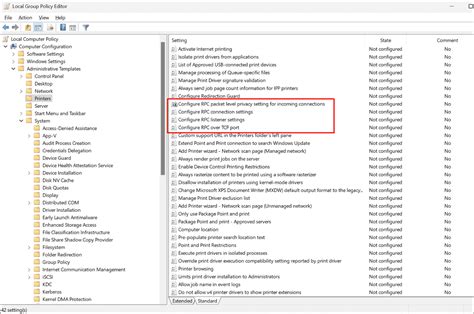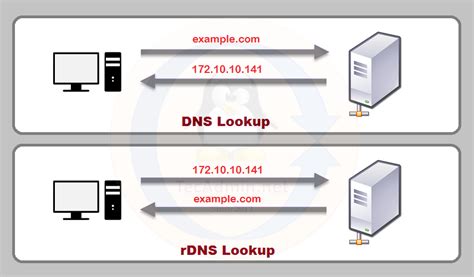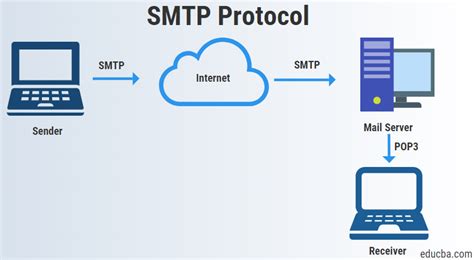Email communication has become an integral part of our personal and professional lives, enabling us to exchange information swiftly and securely. To ensure seamless email delivery, a well-configured Simple Mail Transfer Protocol (SMTP) server is paramount. In this article, we will dive into the intricate process of setting up an SMTP server on a Linux-based environment, providing a step-by-step guide that will empower you to establish a reliable email delivery system.
As you embark on this journey, it is essential to comprehend the significance of an SMTP server. Think of it as the backbone of your email infrastructure, facilitating the transmission of your messages to the intended recipients. With its robust features and intricate configuration settings, an SMTP server acts as the gatekeeper, ensuring the smooth flow of information between email clients and servers.
Throughout this guide, we will explore the various elements involved in configuring an SMTP server on a Linux platform. From selecting the appropriate software to configuring the necessary records, each step is meticulously explained to help you grasp the intricacies involved. Whether you are a seasoned system administrator or an enthusiastic learner, this article caters to all skill levels and will equip you with the knowledge required to set up your own SMTP server.
Understanding the Fundamentals of SMTP: Core Principles and Concepts

Email communication has become an integral part of our lives, with millions of messages exchanged daily across the globe. Behind the scenes, the Simple Mail Transfer Protocol (SMTP) plays a crucial role in ensuring the successful delivery of these messages. In this section, we will explore the basics and concepts of SMTP, shedding light on the inner workings of this essential protocol.
1. Origins and Purpose
The SMTP protocol, developed in the early 1980s, emerged as a reliable method for sending electronic mail. Its primary purpose is to facilitate the transmission of email messages between mail servers and to deliver them to the intended recipients. Understanding the origins and objectives of SMTP is essential for comprehending its functioning in the modern digital landscape.
2. The Client-Server Model
SMTP operates within a client-server model, where the email client (sender) initiates a connection with the SMTP server (receiver) to submit the message for delivery. This interaction relies on a set of specific commands and responses that form the backbone of SMTP communication. Examining the client-server relationship and corresponding interactions will provide insights into how information flows during the email delivery process.
3. Basic SMTP Components
To fully grasp SMTP, it is crucial to understand its foundational components. These components include the message envelope, which contains the sender and recipient addresses, as well as the message header and body. Each element serves a distinct purpose in the email structure, contributing to the smooth functioning of the protocol. Gaining familiarity with these components will enhance your understanding of SMTP's inner workings.
4. Mail Exchange and Routing
SMTP relies on a series of MX (Mail Exchanger) records within the Domain Name System (DNS) to determine the appropriate mail server to deliver each message. Understanding the concept of mail exchange and the process of routing emails between servers is crucial to comprehending how SMTP plays a pivotal role in ensuring the efficient and accurate delivery of emails across various domains.
5. Error Handling and Status Codes
Like any network protocol, SMTP encounters various scenarios that may lead to errors or require specific handling. Familiarizing yourself with the different status codes and error conditions associated with SMTP will equip you with the necessary knowledge to troubleshoot potential issues during the email delivery process. This section will delve into the most common status codes encountered in SMTP communication.
By exploring the origins, structure, and fundamental concepts underlying SMTP, you will gain a solid foundation to dive deeper into the topic and effectively set up and manage an SMTP server on your Linux system.
Choosing the Ideal Linux Distribution for Your SMTP Configuration
When it comes to setting up an efficient and reliable SMTP infrastructure, the Linux distribution you choose plays a crucial role. The right distribution can provide you with the necessary tools and features for seamless email communication, ensuring optimal performance and security.
Each Linux distribution has its strengths and weaknesses, making it essential to select the most suitable one for your SMTP server requirements. Here are some factors to consider when making your decision:
1. Stability: A stable Linux distribution can provide a reliable and consistent environment for your SMTP server, minimizing the risk of crashes or unexpected downtime. Look for distributions known for their long-term support and proven track record of stability.
2. Compatibility: Ensure that the Linux distribution you choose is compatible with the various software and tools you intend to use for your SMTP configuration. This includes the email server software, security measures, and any additional services or plugins you may require.
3. Security: Security is paramount when it comes to email communication. Choose a Linux distribution with robust security features, regular updates, and a strong focus on safeguarding your server from potential threats and vulnerabilities.
4. Community Support: Opt for a Linux distribution with a thriving and active community. This ensures access to a vast pool of knowledge, online forums, and resources that can assist you in troubleshooting issues or seeking guidance for your SMTP server setup.
5. Performance: Consider the performance requirements of your SMTP server and choose a Linux distribution that aligns with those needs. Look for distributions optimized for server environments, with low resource usage and efficient handling of high volumes of email traffic.
By carefully evaluating these factors and considering the specific needs of your SMTP server, you can select the Linux distribution that best fits your requirements, ensuring a smooth and successful setup process.
Exploring Different Linux Distributions and their Suitability for Deploying an Efficient Email Server

In the realm of email communication, choosing the right Linux distribution for hosting an SMTP server plays a crucial role in ensuring seamless email delivery. This section delves into the diverse Linux distributions available and evaluates their suitability for setting up a robust email infrastructure.
- Debian-based Distributions: Known for their stability and security, Debian-based distributions provide a solid foundation for SMTP server setup. Examples include Debian itself, Ubuntu, and Linux Mint.
- Red Hat Enterprise Linux (RHEL): RHEL offers enterprise-grade support and is highly recommended for organizations seeking a reliable and secure environment for running an SMTP server.
- CentOS: As a free, community-supported distribution based on RHEL, CentOS is a popular choice for those looking for a robust and stable operating system for their email server.
- Fedora: Fedora focuses on cutting-edge features, making it suitable for tech enthusiasts seeking the latest advancements in email server technologies.
- openSUSE: With a strong emphasis on usability and ease of administration, openSUSE offers a user-friendly experience, making it a viable option for administrators with varying levels of expertise.
While this list provides a glimpse into the different distributions, it is important to consider various factors such as package availability, community support, and personal familiarity when selecting the most suitable Linux distribution for an SMTP server setup.
Preparing Your Linux Environment for Deployment of a Mail Transport Service
Before embarking on the installation of a Mail Transport Service on your Linux environment, it is important to ensure that your system is properly prepared. This section will guide you through the necessary steps to configure your Linux system in order to facilitate the successful deployment and operation of an efficient and reliable mail server.
First and foremost, it is crucial to verify that your Linux system is running a compatible and up-to-date operating system. Check for any pending updates or patches that need to be applied to ensure that your system is equipped with the necessary security measures and features to support the mail server. Additionally, make sure that the required system resources, such as memory and disk space, are available to adequately handle the expected mail traffic.
Next, it is essential to assess the network infrastructure of your Linux environment. This involves checking network connectivity and ensuring that the necessary ports for mail server operation are open and accessible. Consult your network administrator to configure any firewall settings or network infrastructure components, such as routers or switches, to enable smooth communication between the mail server and external clients.
Furthermore, it is recommended to create a dedicated user account or group specifically for the mail server. This helps to ensure proper access control and security, as well as simplifying the management and monitoring of the mail server processes. Assign appropriate permissions and privileges to this user account or group to allow for smooth operation of the mail server without compromising the overall security of your Linux system.
Lastly, consider implementing additional security measures to protect your mail server and data. Install and configure a reputable antivirus software to scan incoming and outgoing emails for any potential threats. Enable encryption protocols, such as SSL/TLS, to secure the transmission of sensitive information. Regularly monitor and log mail server activities to detect and respond to any suspicious or unauthorized access attempts.
| Important Points: |
|---|
| 1. Ensure your Linux system is running an up-to-date operating system and has sufficient system resources. |
| 2. Check network connectivity and configure necessary firewall settings to allow mail server communication. |
| 3. Create a dedicated user account or group for the mail server and assign appropriate permissions. |
| 4. Install antivirus software and enable encryption protocols for enhanced security. |
| 5. Regularly monitor and log mail server activities to detect any unauthorized access attempts. |
Configuring System Requirements and Dependencies for Seamless Configuration

In order to set up an efficient and functional SMTP server on your Linux system, it is crucial to properly configure the system requirements and dependencies. By ensuring the smooth setup of the required components, you can guarantee a seamless email sending and receiving experience.
Before proceeding with the SMTP server configuration, it is important to review and fulfill the system requirements. These may include the installation of specific software packages, updating the operating system, and ensuring adequate hardware resources such as memory and disk space.
One essential aspect of the system setup is the installation and configuration of the necessary dependencies. These are the additional software packages or libraries that the SMTP server relies on to perform its tasks efficiently. It is important to identify and install the appropriate dependencies to avoid any compatibility or functionality issues.
A recommended approach for configuring dependencies is to utilize package management tools available in your Linux distribution. These tools provide easy and reliable methods for installing and managing software packages, ensuring that the required dependencies are resolved automatically.
An efficient way to manage dependencies is through the usage of package repositories. These repositories provide a centralized location for software packages and their dependencies. By adding the relevant repositories to your system, you can simplify the installation and maintenance of the required dependencies.
- Identify the specific dependencies required for your chosen SMTP server software.
- Search for the relevant package repositories that provide these dependencies.
- Add the repositories to your system's package manager configuration.
- Update the package manager's cache to include the newly added repositories.
- Install the required dependencies by utilizing the package manager's installation command.
By following these steps, you can ensure that the system requirements and dependencies for your SMTP server setup are properly configured. This will contribute to a smooth and efficient installation process, as well as a seamless email communication experience on your Linux system.
Setting up Postfix: A Comprehensive Walkthrough
In this section, we will explore the detailed steps involved in the installation and configuration of Postfix, an efficient and reliable SMTP server solution for your Linux-based system. By following these instructions, you will be able to seamlessly set up and configure Postfix to handle your email communication needs.
- Prepare your Linux environment
- Install Postfix package
- Configure Postfix for outgoing emails
- Secure your Postfix installation
- Test and troubleshoot your Postfix setup
Before proceeding with the installation, it is essential to ensure that your Linux environment is up to date and properly configured. This step includes checking for necessary dependencies, updating package repositories, and performing any required system optimizations to guarantee the smooth installation of Postfix.
In this step, we will guide you through the process of installing the Postfix package on your Linux system. This involves using package management tools, such as apt or yum, to fetch and install the latest version of Postfix. We will also cover the required packages and configurations that need to be considered during the installation process.
Once Postfix is installed, it needs to be properly configured to handle outgoing emails. This includes setting up the main configuration file, defining the domain name and SMTP relay host, configuring access restrictions, and enabling features such as SMTP authentication and TLS encryption.
Security is paramount when setting up an SMTP server. In this step, we will outline various measures to secure your Postfix installation, such as implementing firewall rules, enabling connection rate limiting, setting up SMTP banner protection, and configuring email filtering and spam protection.
After completing the installation and configuration, it is vital to verify whether your Postfix setup is functioning correctly. We will guide you through the process of testing different aspects of your setup, including sending test emails, checking the mail log for errors, and resolving common troubleshooting issues.
By following this comprehensive step-by-step guide, you will acquire the necessary knowledge and skills to successfully install and configure Postfix as your SMTP server on a Linux-based system. Whether you are a beginner or an experienced user, this walkthrough will provide you with the confidence to establish a reliable email communication system.
Downloading, Installing, and Configuring Postfix for Optimal Email Delivery

Ensuring efficient email delivery is imperative for a smooth communication system. This section outlines the process of downloading, installing, and configuring Postfix, an exceptional solution for handling mail transfer. By following these steps, you can establish a robust email delivery system with seamless performance.
| Step | Description |
|---|---|
| 1 | Download the latest version of Postfix from the official website or repository. Confirm the authenticity of the source before proceeding with the download. |
| 2 | Once the download is complete, navigate to the downloaded package and extract the files to a suitable directory on your Linux system. |
| 3 | Before installing Postfix, ensure that all required dependencies are met. Refer to the documentation for a detailed list of prerequisites. Install any missing dependencies to avoid potential issues. |
| 4 | Proceed with the installation of Postfix using the appropriate commands for your Linux distribution. Follow the on-screen prompts to customize the installation according to your specific requirements. |
| 5 | After the installation, it is essential to configure Postfix for seamless email delivery. Access the Postfix configuration file located in the designated directory and modify the necessary parameters. |
| 6 | Pay close attention to crucial configuration settings such as domain name, network interfaces, email relay options, and security measures. Adjust these settings according to your network environment and security policies. |
| 7 | Test the functionality of Postfix by sending and receiving test emails. Monitor the mail logs to ensure successful delivery and identify any potential issues that need to be addressed. |
With Postfix successfully downloaded, installed, and configured, you can establish a reliable email delivery system on your Linux system. Remember to regularly update and maintain the Postfix installation to mitigate any vulnerabilities and ensure optimal performance.
Configuring DNS and Reverse DNS for Efficient Email Delivery
When it comes to setting up an efficient email delivery system, configuring the DNS (Domain Name System) and setting up reverse DNS are crucial steps. DNS is responsible for translating domain names into IP addresses, allowing email servers to locate the correct destination. Reverse DNS, on the other hand, verifies the authenticity and reliability of the email sender's domain.
Properly configuring DNS includes setting up the necessary DNS records, such as the Mail Exchanger (MX) record, which specifies the email server responsible for receiving incoming emails for a particular domain. Additionally, configuring SPF (Sender Policy Framework), DKIM (DomainKeys Identified Mail), and DMARC (Domain-based Message Authentication, Reporting, and Conformance) records helps enhance email security and prevent spoofing and phishing attempts.
Reverse DNS, also known as rDNS or PTR (Pointer) records, verifies the association between an IP address and its corresponding domain name. This verification process ensures that the recipient's email server can perform a reverse lookup and confirm that the sending domain is legitimate. It adds an extra layer of trustworthiness to the email sender, reducing the chances of emails being flagged as spam or rejected altogether.
To configure DNS and reverse DNS effectively, you need access to your domain's DNS management interface. This interface typically allows you to create, modify, and delete DNS records for your domain. Consult your domain registrar or hosting provider for detailed instructions on accessing and managing your DNS settings.
| Key DNS and reverse DNS configurations: | |
|---|---|
| DNS Record Type | Purpose |
| MX | Specifies the email server responsible for receiving emails for the domain. |
| SPF | Authorizes the IP addresses that are allowed to send emails for the domain. |
| DKIM | Provides a digital signature to verify the authenticity of the email message. |
| DMARC | Defines policies for handling emails that fail SPF and DKIM verifications. |
| PTR (rDNS) | Associates an IP address with its corresponding domain name for sender verification. |
By properly configuring DNS and reverse DNS for your email server, you can ensure reliable email delivery, minimize the chances of your emails being flagged as spam, and enhance email security. Paying attention to these configurations will help establish trust between email servers, validating your domain as a legitimate and reliable source of email communication.
Understanding the Significance of DNS and Reverse DNS in Configuring an SMTP Server

In the context of setting up an SMTP server on a Linux environment, it is crucial to comprehend the importance of DNS (Domain Name System) and reverse DNS. These two components play vital roles in the proper configuration and functioning of an SMTP server.
DNS acts as a directory that translates human-readable domain names into machine-readable IP addresses. When an email is sent using an SMTP server, DNS helps in resolving the domain name of the recipient's email server into its corresponding IP address. This enables the SMTP server to establish a connection with the recipient server and deliver the email successfully.
Reverse DNS is the process that associates an IP address with a domain name. When an email is received by an SMTP server, it performs a reverse DNS lookup on the sender's IP address. This allows the server to verify the authenticity of the sender's domain and helps in preventing spam and other types of email abuse.
Without proper DNS configuration, the SMTP server may encounter difficulties in delivering emails to the intended recipients. It relies on DNS to locate and establish connections with other email servers on the internet. Similarly, without reverse DNS configuration, the SMTP server may face challenges in filtering out spam and malicious emails, resulting in a compromised email infrastructure.
In conclusion, comprehending the significance of DNS and reverse DNS in configuring an SMTP server is essential for ensuring efficient email delivery and maintaining security standards. Properly configuring these aspects will enhance the overall performance and reliability of the SMTP server.
Ensuring the Security of Your SMTP Server: Implementing SSL/TLS Certificates
In the ever-evolving landscape of online communication, securing your SMTP server is of paramount importance. One effective way to enhance the security of your server is by implementing SSL/TLS certificates. This article will guide you through the process of setting up and configuring SSL/TLS certificates for your SMTP server, ensuring data privacy and integrity.
Understanding SSL/TLS Certificates
SSL (Secure Sockets Layer) and its successor TLS (Transport Layer Security) are cryptographic protocols that provide secure communication over the internet. SSL/TLS certificates are digital certificates that verify the authenticity of a website or server and encrypt the data exchanged between the client and server.
The Benefits of SSL/TLS Certificates for SMTP Servers
By implementing SSL/TLS certificates for your SMTP server, you can achieve several benefits:
- Data Encryption: SSL/TLS certificates encrypt the communication between the SMTP client and server, ensuring that sensitive information remains private and secure.
- Authentication: SSL/TLS certificates verify the identity of the SMTP server, preventing unauthorized access and mitigating the risk of man-in-the-middle attacks.
- Data Integrity: SSL/TLS certificates provide mechanisms to verify the integrity of the data being transmitted, protecting against tampering or modification.
Obtaining an SSL/TLS Certificate
Before implementing SSL/TLS certificates for your SMTP server, you need to obtain a certificate from a trusted Certificate Authority (CA). CAs are organizations that validate the identity of websites and issue digital certificates. You can choose from various commercial CAs or utilize free and open-source options like Let's Encrypt.
Configuring SSL/TLS Certificates for Your SMTP Server
To configure SSL/TLS certificates for your SMTP server, you need to:
- Generate a Certificate Signing Request (CSR): This process involves creating a private key and a CSR file that contains information about your organization and server.
- Submit the CSR to the CA: After generating the CSR, you need to submit it to the CA of your choice to obtain the SSL/TLS certificate.
- Install the Certificate: Once you receive the SSL/TLS certificate from the CA, you need to install it on your SMTP server and configure the appropriate settings.
- Test and Verify: It is essential to test and verify your SSL/TLS configuration to ensure that the secure communication between the SMTP client and server is successfully established.
Conclusion
By implementing SSL/TLS certificates for your SMTP server, you can significantly enhance its security and protect the confidentiality, authenticity, and integrity of the data transmitted. Configuring SSL/TLS certificates may require some technical expertise, but the benefits it provides in terms of data protection and trustworthiness are well worth the effort.
Secure Your SMTP Server with SSL/TLS Encryption: Step-by-step Instructions

Protecting your email communications is essential in today's digital world. In this section, we will guide you through the process of setting up SSL/TLS encryption on your SMTP server to ensure the confidentiality and integrity of your messages.
First, let's start by understanding the importance of SSL/TLS encryption. SSL (Secure Sockets Layer) and its successor TLS (Transport Layer Security) are cryptographic protocols that establish a secure connection between a client and a server. By using SSL/TLS, you can encrypt the data exchanged between your SMTP server and email clients, preventing unauthorized access and eavesdropping.
Step 1: Obtain a trusted SSL/TLS certificate. To enable SSL/TLS encryption on your SMTP server, you will need a valid certificate signed by a trusted certificate authority (CA). This certificate ensures the authenticity of your server and encrypts the data sent and received.
Step 2: Install the SSL/TLS certificate on your server. Once you have obtained the certificate, you need to configure your SMTP server to use it. This typically involves generating a private key and certificate signing request (CSR), submitting the CSR to the CA, and then installing the issued certificate on your server.
Step 3: Configure your SMTP server for SSL/TLS support. After installing the SSL/TLS certificate, you need to update your server's configuration to enable SSL/TLS encryption. This involves modifying the server's settings file to specify the certificate and enable SSL/TLS protocols.
Step 4: Test and verify your SSL/TLS setup. Once you have completed the configuration, it is crucial to test your SMTP server's SSL/TLS encryption to ensure it is functioning correctly. You can use various tools and online services to verify the SSL/TLS configuration and identify any potential issues.
In conclusion, securing your SMTP server with SSL/TLS encryption is a crucial step in safeguarding your email communications. By following the step-by-step instructions outlined above, you can establish a secure connection and protect the confidentiality and integrity of your messages.
FAQ
What is an SMTP server and why do I need to set it up on my Linux system?
SMTP stands for Simple Mail Transfer Protocol, and it is the standard protocol used for sending emails over the internet. An SMTP server is responsible for the sending, receiving, and routing of emails between email clients. Setting up an SMTP server on a Linux system allows you to have control over your own email communication, rather than relying on third-party services.
What are the requirements for setting up an SMTP server on a Linux system?
The requirements for setting up an SMTP server on a Linux system include a Linux operating system (such as Ubuntu or CentOS), root access to the server, a stable internet connection, and the necessary software packages for your chosen SMTP server software (such as Postfix or Exim).
What are the steps involved in setting up an SMTP server on a Linux system?
Setting up an SMTP server on a Linux system involves several steps. First, you need to install and configure the necessary software packages for the SMTP server. Then, you need to configure the DNS settings for your domain. Next, you have to configure the SMTP server software with appropriate settings, such as authentication and relay restrictions. Finally, you need to test the SMTP server to ensure it is working correctly.
Are there any security considerations I need to keep in mind when setting up an SMTP server on a Linux system?
Yes, there are several security considerations to keep in mind when setting up an SMTP server on a Linux system. Firstly, make sure to enable encryption protocols such as SSL or TLS to secure the communication between the server and clients. Additionally, implement strong authentication mechanisms to prevent unauthorized access to your server. It is also recommended to regularly update the software packages and monitor the server logs for any suspicious activity.




